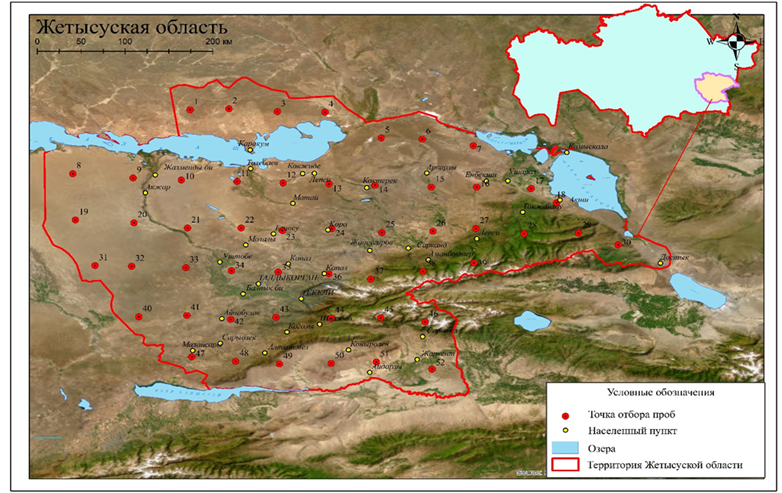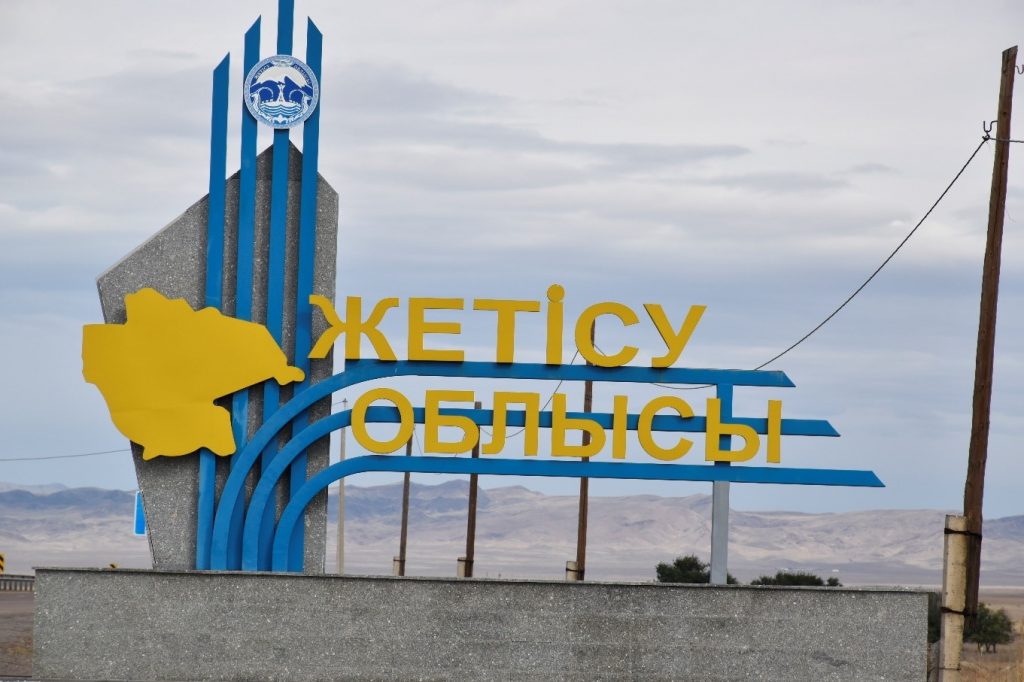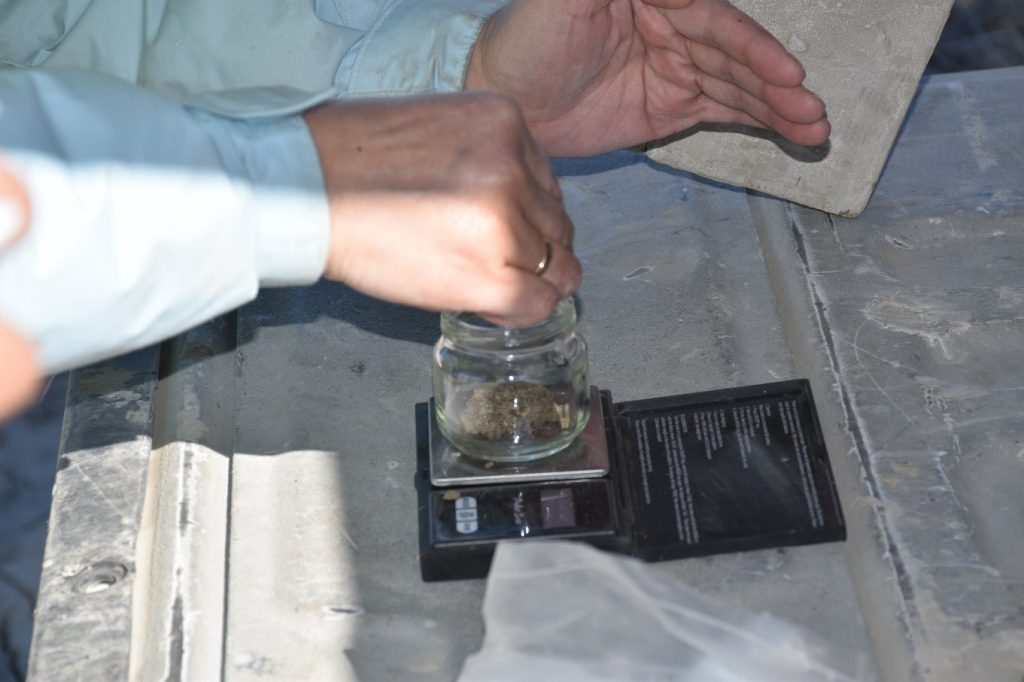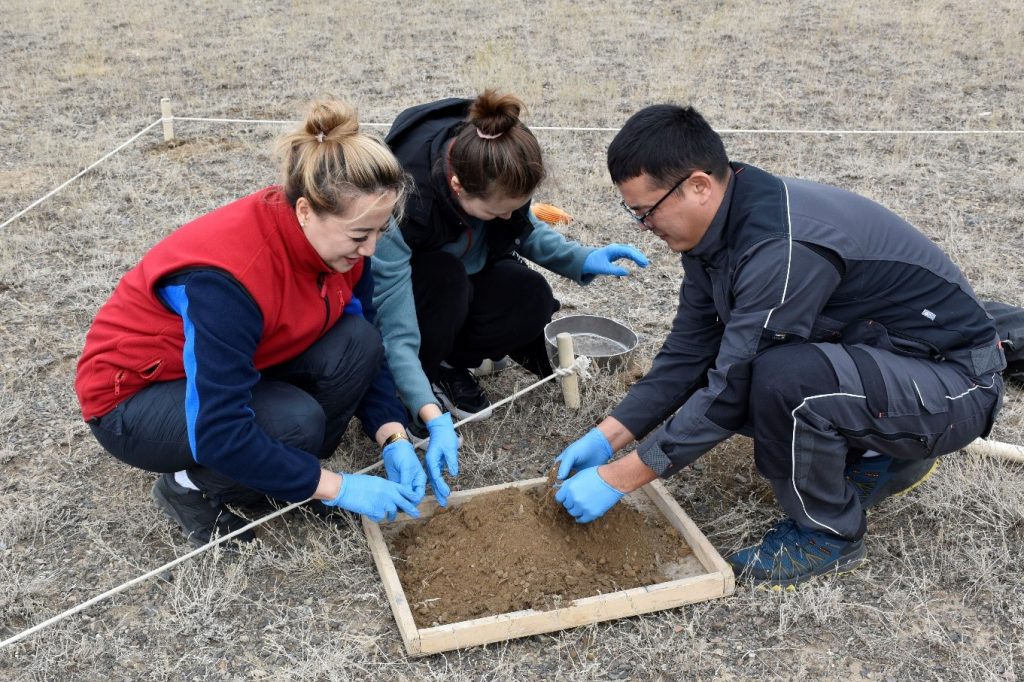Supervisor: PhD, Associated Prof. Madibekov A.S.
The object of the study is Zhetysu region.
The aim of the work is to study and assess the impact of pollution of depositing media (soil cover) on ecosystem sustainability of Zhetysu region in order to develop effective strategies to ensure environmental sustainability of the region.
The research methods include chemical-analytical, chromatographic, atomic absorption and mapping methods, systematic and comparative analysis, as well as the use of computer technology for information processing.
Obtained results: in accordance with the Calendar Plan in the current year 2024 the current ecological state of depositing environments in the region was analyzed. Locations of monitoring sites were determined and field and laboratory studies on soil sampling for chemical-toxicological analysis were conducted, as well as assessment of soil contamination level and their spatial distribution. Maps of soil contamination distribution with toxic compounds were constructed and systematic analysis of the obtained results was carried out.
Analysis of the current ecological state of depositing environments on the territory of the region
Zhetysu region is located in a favorable natural and climatic zone, rich in natural resources, fertile lands and water bodies. The strategic importance of the region is determined by important transportation corridors and proximity to the border of other countries. The region's economy is based on the agrarian and industrial sectors, which contributes to economic sustainability, but also increases anthropogenic pressure on the environment. The region's infrastructural constraints make waste treatment and environmental protection difficult.
The main sources of air pollution are heat and power enterprises, motor vehicles, as well as facilities of the agricultural and construction sectors. In recent years, environmental protection measures have been implemented, including modernization of treatment facilities, which helps to reduce emissions of inorganic dust, soot, hydrocarbons and heavy metals. However, the Atmospheric Pollution Index (API) shows a high level of pollution, especially in winter, when emissions from heat power and transportation increase. According to the data of RSE "Kazhydromet", in the last five years, numerous exceedances of MPCs for suspended particles PM-10 and PM-2.5, carbon monoxide and hydrogen sulfide have been registered.
Sources of pollution of water bodies are public utilities (95% of all discharges), mining and food industry. The largest polluters are public utilities, such as SCP VH "Karatalirrigation" and "Zhetysu Vodokanal". According to data for 2023, water quality in the region's water bodies is classified as Class 2, with exceedances of MACs for suspended solids, nitrites and phosphorus.
Soil pollution, especially in Taldykorgan, Tekeli and Zharkent, includes high concentrations of heavy metals (lead and zinc), which is associated with the activities of the Tekeli Lead and Zinc Combine. These substances deteriorate physical and biological properties of soil, reducing its fertility and posing a threat to public health. Also, soil degradation caused by anthropogenic impacts is recorded on agricultural lands, which negatively affects their productivity.
In general, the development of the region increases anthropogenic pressure on the natural environment. Urbanization and active activity of energy and agrarian enterprises lead to reduction of biodiversity, degradation of water resources and desertification. The current state of ecology of Zhetysu oblast requires strengthening of monitoring and modernization of environmental protection measures. The introduction of a systematic approach to reducing the anthropogenic load and effective management of natural resources will play a key role in ensuring the sustainability of the region.
Assessment of soil contamination levels and their spatial distribution. Distribution maps of toxic compounds in soil
The results of chemical-toxicological analysis of soils on the territory of the region showed the following regularities and peculiarities of distribution of heavy metals and other chemical indicators that determine the state of ecosystems in the region.
The pH values of soils in Zhetysu oblast range from 5.7 to 8.1, which reflects the diversity of acidity and supports normal biological activity. Most soils have neutral or slightly alkaline reactions, favoring a healthy microbiological composition. Soil mineralization ranges from 20 to 3240 mg/dm³; high salt content contributes to heavy metal accumulation, especially in soils with heavier particle size distribution. The soils of the region cover different types ranging from sandy to clayey, which affects their ability to retain pollutants. Clayey and loamy soils effectively accumulate heavy metals, while sandy soils, which are more permeable, tend to leach metals, which reduces the risk of accumulation.
Copper content in soils ranged from 0.003 to 0.037 mg/kg. High copper concentrations were detected in heavy loams and sandy loams at points 24, 26 (up to 0.037 mg/kg) and 28 (up to 0.036 mg/kg), which may be related to local sources of anthropogenic pollution and good sorption capacity of these soil types. The lowest copper concentrations (0.003 mg/kg) were recorded in sandy loam soils, for example (point 46).
Zinc concentrations vary from 0.006 to 0.195 mg/kg. The highest zinc values (up to 0.195 mg/kg) are observed in the eastern and south-eastern parts of the oblast, including areas near the cities of Sarkand and Zharkent, which indicates strong local pollution, probably related to industrial and agricultural activities. Low concentrations of zinc (0.008 mg/kg) are typical for central and western parts of the oblast.
Low concentrations of lead were recorded in sandy soils in the northern and central parts, especially near Lake Balkash and the cities of Taldykorgan and Sarkand (0.006-0.007 mg/kg). In the eastern and south-eastern parts, near the border with China and Zharkent, high concentrations of lead were recorded, which may be related to transboundary transport of pollutants and industrial activity near the border.
Cadmium content varies from 0.001 to 0.009 mg/kg. High levels of cadmium are observed in soils with high mineralization in the areas of points 26, 34 and 35 (near Sarkand, Taldykorgan), as well as near Lake Zhalanashkol (points 29 and 30). High mineralization of soils may contribute to cadmium retention in these areas.
Cobalt concentrations were in the range of 0.015-0.030 mg/kg. The highest concentrations were found in heavy loams (up to 0.030 mg/kg), which indicates the propensity of these soils to accumulate cobalt in areas with high anthropogenic load, especially in central and southern areas, including the eastern border with PRC.
Nickel content varies from 0.0081 to 0.024 mg/kg. High nickel concentrations of up to 0.024 mg/kg are noted at points 26 and 28 in the eastern part of the region, which may be related to the presence of clay soils capable of retaining metals. Lower nickel concentrations are characteristic of the central and western areas.
Analysis of heavy metals distribution and chemical indicators of soils in the region indicates a significant influence of granulometric composition and mineralization on the ability of soils to accumulate pollutants. Clayey and loamy soils with high mineralization have high sorption capacity and serve as long-term accumulators of heavy metals, while sandy and sandy loam soils are less resistant to pollution due to their high permeability.
Identified areas with elevated heavy metal content in soil are associated with anthropogenic impact, including agricultural and industrial activities, as well as with the influence of transport infrastructure. These results are necessary for further development of recommendations on soil pollution management and ensuring environmental safety of the region.
Systematic analysis of the results obtained
The system analysis of data on chemical-toxicological state of soils of the region demonstrates a significant diversity of soil composition caused by both natural and anthropogenic factors.
The range of soil acidity, from slightly acidic to slightly alkaline (pH 5.7-8.1), and varying mineralization up to 3240 mg/dm³ indicate a high level of soil heterogeneity. The neutral and slightly alkaline reaction of soils in most of the territory provides stable conditions for biological activity, supporting microbiological stability of ecosystems. At the same time, high mineralization, typical for the eastern and south-eastern part of the region, contributes to the retention of heavy metals, creating conditions for their long-term accumulation, especially in soils with high sorption capacity, such as heavy loams and clays.
The granulometric composition of soils varies from sandy to clay types, which has a key influence on the ability of soils to retain heavy metals. Clayey and loamy soils, with their significant sorption capacity, tend to accumulate heavy metals. In contrast, sandy soils, due to their permeability and weak sorption capacity, promote leaching of pollutants, which reduces their long-term accumulation.
Spectrometric analysis showed the presence of localized zones with increased concentrations of copper, zinc, lead, cadmium, cobalt and nickel. These zones, concentrated mainly in heavy loams and clayey soils of the eastern and south-eastern parts of the region, correlate with the main anthropogenic sources of pollution - agricultural activities, industrial production and transportation infrastructure. High concentrations of heavy metals in these soils indicate their long-term retention and potential danger for aquatic ecosystems, as such soils can serve as reservoirs of pollutants, gradually releasing them into water bodies and groundwater.
The results of system analysis demonstrate that the level of soil contamination in the region depends on a combination of natural factors (acidity, mineralization and granulometric composition) and anthropogenic impacts (agriculture, industrial production, transport). The data emphasize the need to take these factors into account when assessing the ecological state of soils and their heavy metal contamination, as well as when developing strategies for soil quality management and environmental protection.
FIELD PROGRAM
- Justification of field works. Field study with measurement and analysis of a complex of hydrophysical and hydrochemical indicators and sampling of soil cover in order to determine the chemical composition (granulometric composition, pH, content of heavy metals (Cu, Zn, Pb, Cd, Co, Ni and PCBs), which allows to give a comprehensive ecological and analytical assessment of the degree of pollution of natural objects with toxic compounds according to their content in the depositing media of the territory of Zhetysu region. The results of field and laboratory studies are included in the interim report on this project.
- Types of work:
According to the Project Calendar Plan, due to the specifics of the research, the following activities have been carried out:
➢ collection of field materials (soil sampling);
➢ preparation of samples for toxicological analysis;
➢ extraction of collected samples for PCB determination;
➢ toxicological analysis in the Institute's laboratory.
- Collection of field materials. Key points of soil sampling on the territory of Zhetysu oblast are shown in Figure 1.

4. Materials obtained as a result of field research
1. Soil sampling fieldwork included:
- soil sampling;
- Sample preparation: 250 ml - for the determination of heavy metals (Cu, Zn, Pb, Cd, Co, Ni);
- Extraction of soil and water samples for PCB determination with n-hexane (50 ml).
Soil sampling was carried out at certain points and was performed on the sample site from one or more layers, or horizons by the envelope method, diagonally with such a calculation that each sample represents a part of soil typical for genetic horizons or layers of the given soil type. The number of point samples shall comply with GOST 17.4.3.01-83. A necessary condition for soil sampling is to protect them from secondary contamination at all stages of preparation. Soil samples intended for TM determination were taken with metal-free tools.
A pooled sample was compiled by mixing point samples collected from one sample site. For chemical analysis, the pooled sample was made up of at least five point samples taken from one sample site. The mass of the pooled sample was not less than 1 kg. To control pollution by surface-distributed pollutants (heavy metals, PCBs) - point samples were taken layer by layer from the depth of 0-5 and 5-20 cm with the mass not more than 200 g each. Soil samples for chemical analysis were dried to air-dry condition according to GOST 5180-75. Air-dry samples were stored in cloth bags, in cardboard boxes or in glass containers.
Safety techniques and precautions when working with chemical reagents, equipment under field conditions were observed according to the HSE instructions.
5. The route of expeditionary research is drawn up taking into account safety equipment, requirements to labor and rest regime of employees and drivers.
6. Scopes of work performed during the expedition research:
The observations carried out included sampling for analysis of physico-chemical parameters (soil particle size distribution, pH), TM (Cu, Zn, Pb, Cd, Co, Ni) and congener PCBs, which were also determined in soil samples.
Conclusion.
A total of 104 soil samples were delivered to the institute's laboratory for hydrochemical and toxicological analysis. The set goal and objectives were fulfilled in full according to the Field Work Program. The results of field and laboratory studies are reflected in the interim report for 2024.
Photo report of field work on the study area



Full details are available on the Institute's Facebook page at this link https://www.facebook.com/share/v/1AXhumFJTx/





